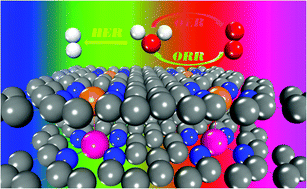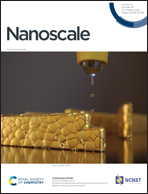Rational prediction of multifunctional bilayer single atom catalysts for the hydrogen evolution, oxygen evolution and oxygen reduction reactions†
Abstract
Bimetallic atom catalysts (BACs), which can exhibit remarkable catalytic performance compared with single atom catalysts (SACs) due to their higher metal loading and the synergy between two metal atoms, have attracted great attention in research. Herein, by means of density functional theory calculations, novel BACs with a bilayer structure composed of monolayers FeN4 (Fe and nitrogen co-doped graphene) and MN4 (Fe/M, M represents transition metal atoms) as electrocatalysts for the hydrogen evolution reaction (HER), oxygen reduction reaction (ORR), and oxygen evolution reaction (OER) are investigated. Among these bilayer SACs, a series of highly efficient monofunctional, bifunctional, and even trifunctional electrocatalysts have been screened. For example, the overpotentials for the HER, ORR, and OER can reach −0.02 (Fe/Cu), 0.31 (Fe/Hg), and 0.27 V (Fe/Hf), respectively; Fe/Hf and Ir/Fe can serve as promising bifunctional catalysts for the ORR/OER and HER/OER, respectively and Fe/Rh is considered as an excellent trifunctional catalyst for the HER, OER, and ORR. This work not only provides a new idea for understanding and optimizing the active sites of BACs, but also proposes a new strategy for designing high-performance multifunctional electrocatalysts for fuel cells and metal–air batteries.



 Please wait while we load your content...
Please wait while we load your content...